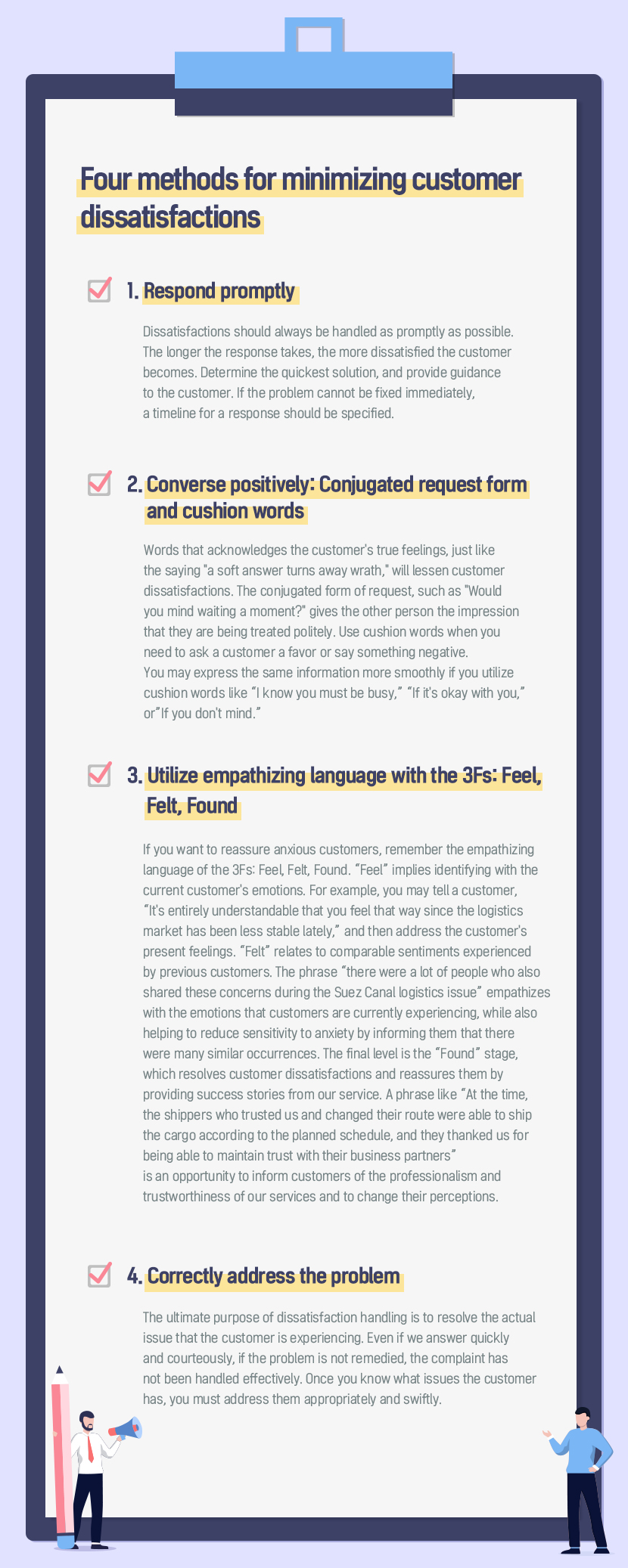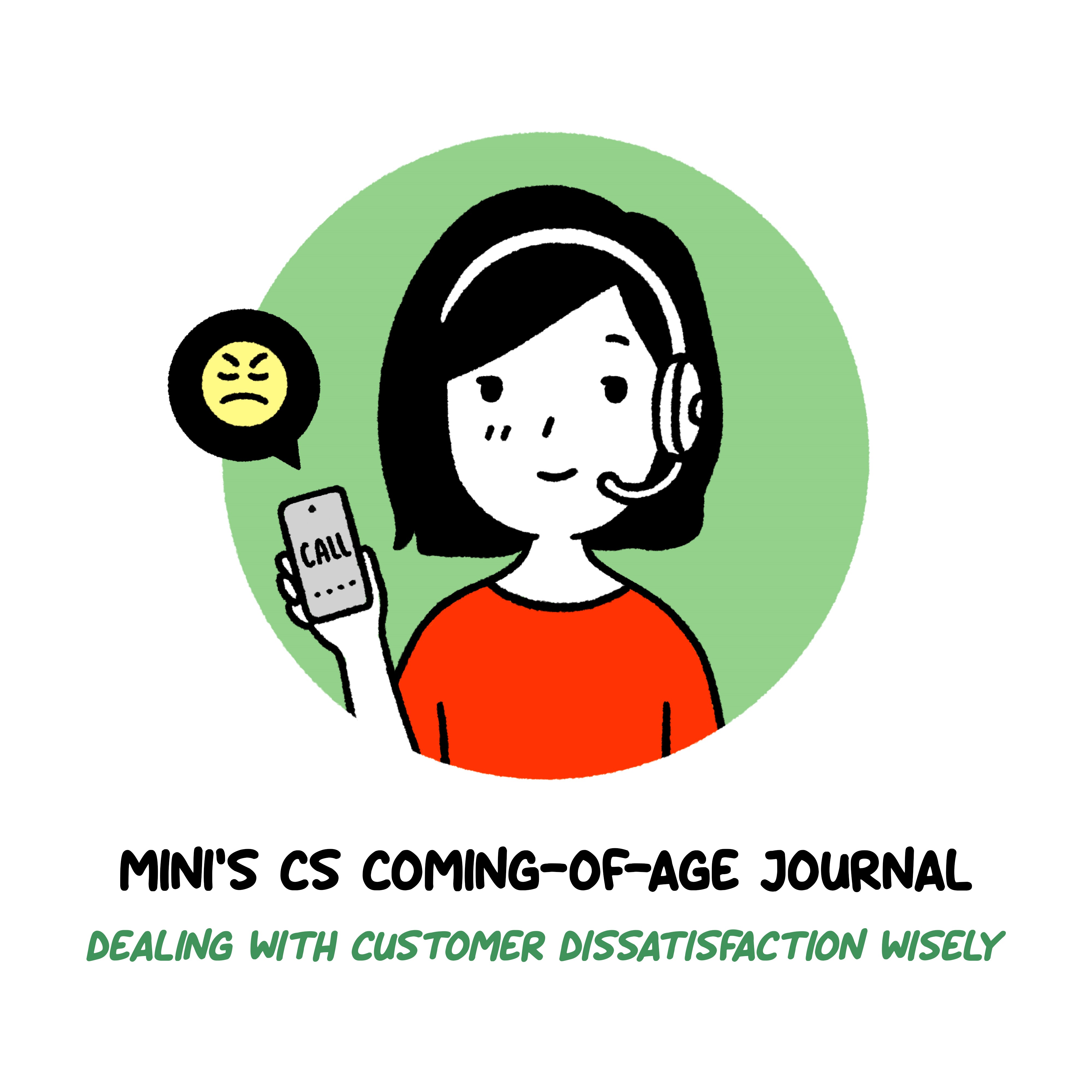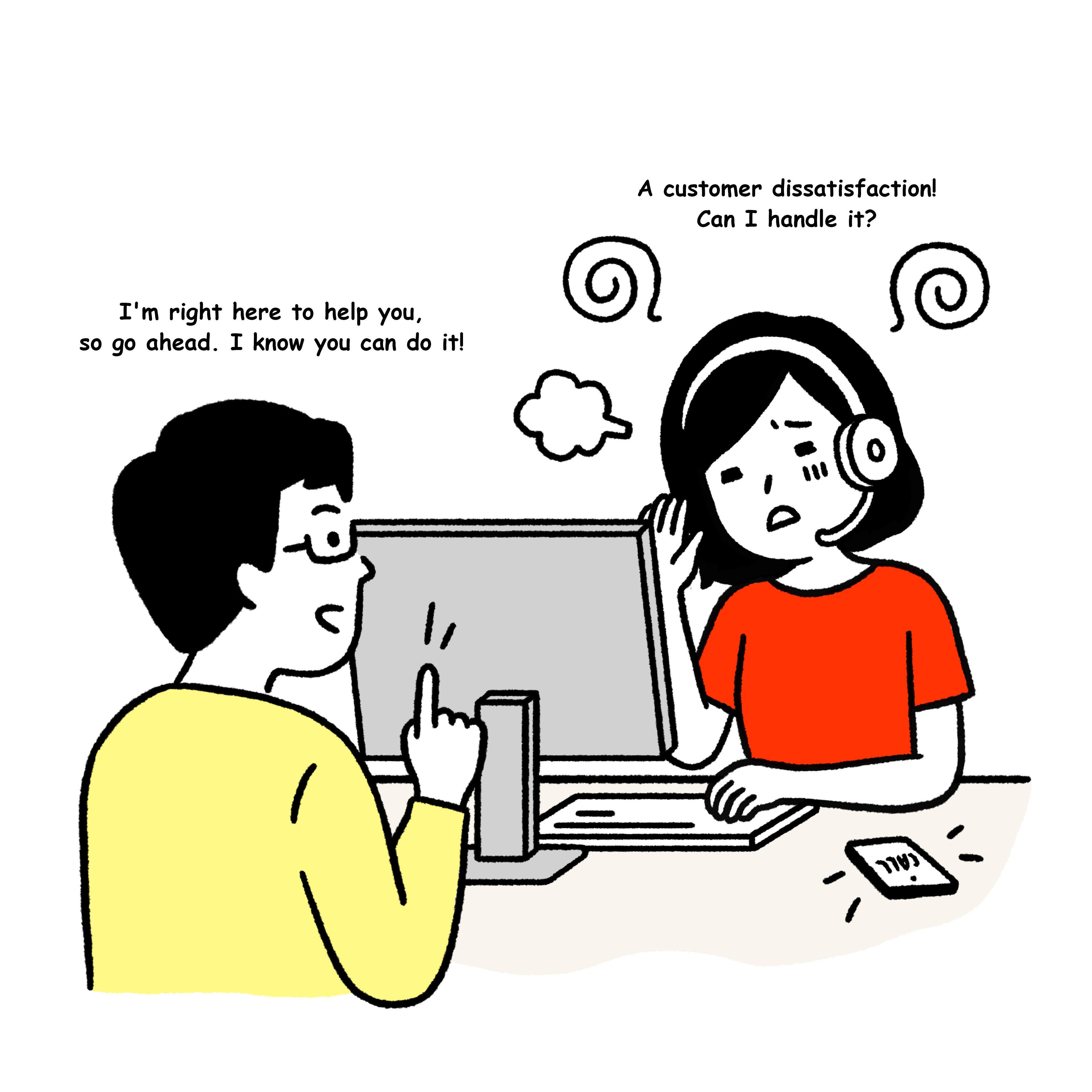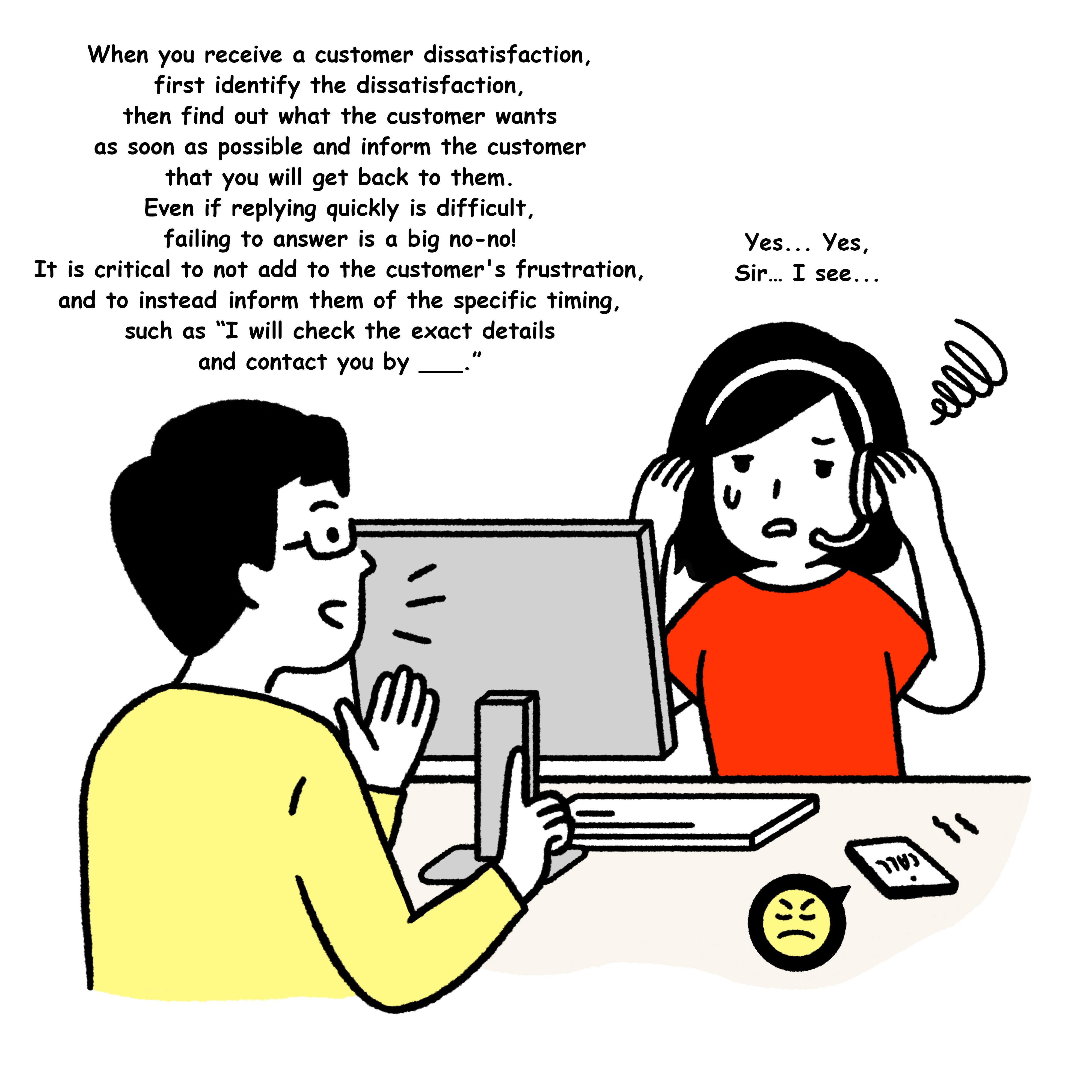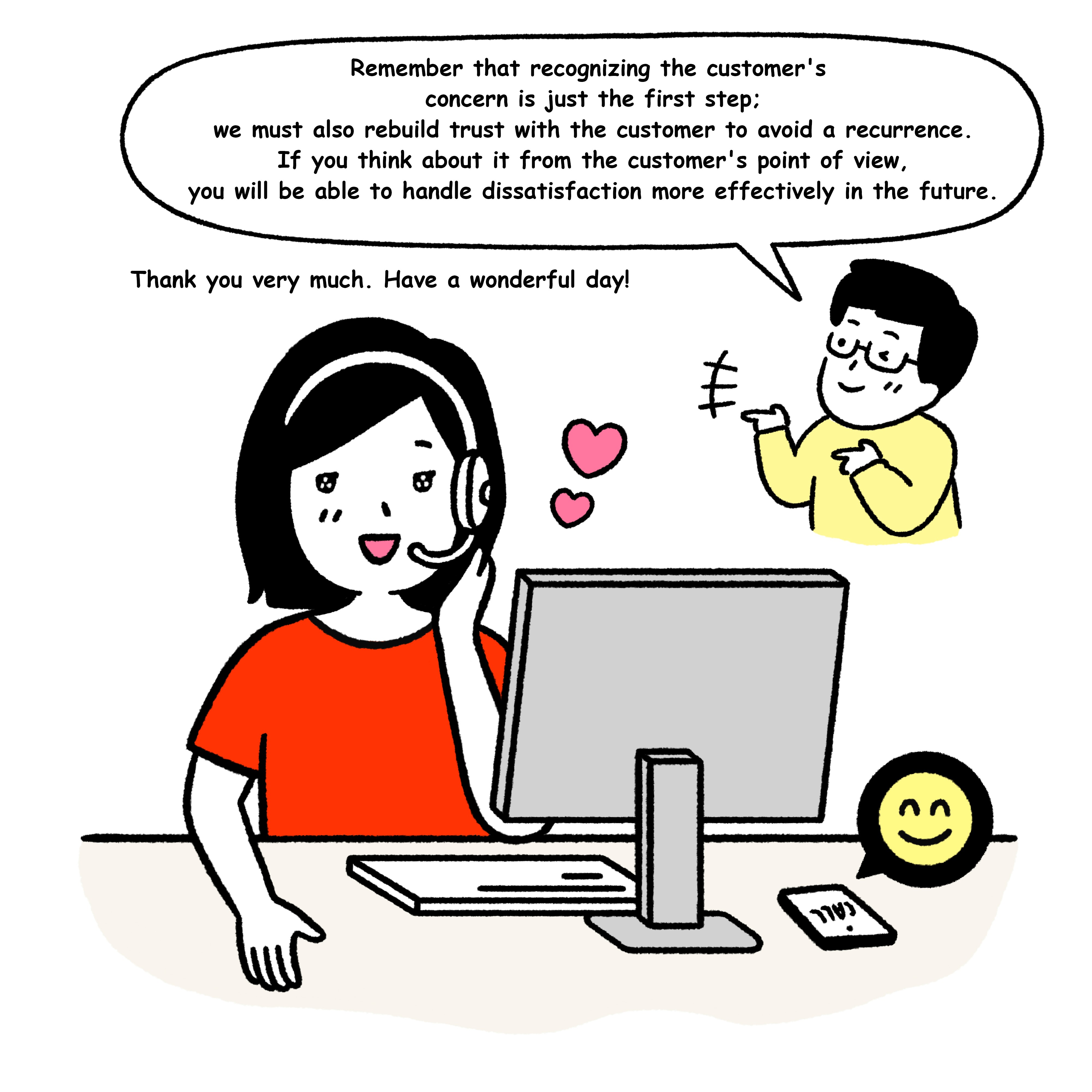Is it appropriate to apologize first if someone in the organization has dissatisfaction, especially a customer? How can you handle it gracefully? Let’s learn how to handle dissatisfactioned and respond appropriately.
Why consumer dissatisfactions are to be taken seriously
Customer dissatisfactions are a valuable asset to the company. Unsatisfied customers are also customers who have high expectations for the company’s services. It is through these unsatisfied customers that the company can gain crucial information about the service and find an opportunity to resolve the shortcoming. As these are concerns expressed by customers who have firsthand experience with the service, if the company actively embraces customer ideas and addresses the problem, it will result in essential service development. Customer needs also generate fresh ideas for service growth.
Not only that, but resolving dissatisfactions provides an opportunity to re-establish a relationship with the customer. Through the experience of having their problems resolved, customers can develop a sense of trust in the company, and the company in turn can create a favorable impression of its service.
In this light, customer dissatisfactions are not simply problems that have to be resolved. Don’t forget that customer dissatisfactions can be a great way to improve a company’s service, so let’s approach it with a more open attitude.
Three causes of customer dissatisfaction and how to deal with them
Three factors contribute to customer dissatisfaction. “Dissatisfaction with staff” is caused by lack of expertise or politeness of the relevant employee, “Dissatisfaction with the company” is caused by the company’s system or compensation, and “Customer self-dissatisfaction” is generated by the individual’s own emotional distress or negligence.
If it is “dissatisfaction with staff”, you must determine which aspect is the source of the customer’s dissatisfaction. If you receive a dissatisfaction that you were rude, you should immediately apologize to the customer and emphasize your commitment to improve. It is also vital to re-evaluate customer service and identify the root problem. Customers may be put off by the way you speak and expresses yourself, even if the indicators are minor. Also, if you are in a situation where false information has harmed a customer, you should swiftly convey the revised information and apologize for the shortcoming. The most crucial aspect of “dissatisfaction with staff” is the response and speech of the individual addressing the dissatisfaction.
How should we handle “dissatisfaction with the company”? First, client dissatisfactions must be understood and communicated to the organization. You should then decide whether the issue can be corrected, and appropriately guide the customer. Second, you must understand that it is “dissatisfaction with the company” and refrain from becoming emotionally involved in your reactions. Recognize that this is not a personal dissatisfaction against you, and empathize with the situation from the customer’s point of view.
The most challenging problem to solve is “customer self-dissatisfaction.” It is tough to overcome dissatisfaction created by the customer’s own emotional distress or negligence. So, how do we handle it? It is appropriate in this circumstance to proactively convey empathy for the customer’s situation. Try to understand the customer’s feelings by using empathy language, such as “That must have been difficult,” and “That sometimes happens for me, too.” It is also a good idea to practice using a conjugated request form that includes cushion words, such as “If it’s alright, would you like to try the method I provided one more time?” Most customers will stop expressing dissatisfaction and try to remedy the problem if you treat them with sincerity.
Writer Editorial Department
2022.06.09



